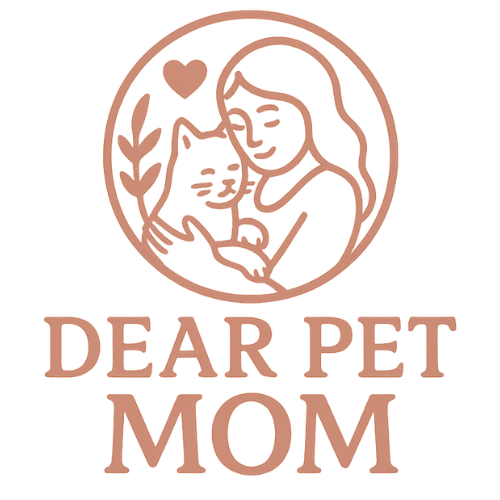Part 5: Budgeting For a Cat (CAD Monthly and Annual Costs version) with free Calculator
Last Updated: July 2025
📍 Note: This post includes Canada-specific pricing in CAD. If you're outside Canada, check out the global version of this guide here →
Dear Pet Mom,
Let’s talk about the not-so-cuddly part of cat parenthood: the budget.
While cats are generally lower-maintenance than dogs, they still come with recurring costs and a few surprise expenses that every new pet parent should be prepared for. A little upfront planning can make a big difference in ensuring your cat gets the care and comfort they deserve, without catching you off guard.
This post walks you through typical monthly costs, yearly health care, and what you might want to set aside for emergencies. As a bonus, you’ll also find our free online Pet Cost Calculator that will be helpful to use in your planning.
Pet Cost Mini Calculator
Quick estimate for monthly and first year costs.
More categories
Ongoing Monthly Total
First Year • Avg Monthly
Basic Monthly Budget
Here’s what I personally spend per month on my three cats in Calgary. These are mid- to top-range estimates based on quality food, natural litter, and basic supplies.
Item Monthly Cost (CAD)
Dry food 38
Wet food 25
Litter 54
Miscellaneous 20
Total (for 3 cats): CAD 137
Average per cat: CAD 45.66
This budget doesn’t include vet care, pet insurance, or emergency expenses. Let’s look at those next.
Related: The Ultimate Guide to Creating a Pet Budget (Monthly and Annual Costs)
Vet Care: Vaccines, Exams & Microchipping
In Canada, annual core vaccines and a wellness checkup will cost you around CAD 200–250 per year. Kittens usually require a series of initial shots in the first year, which can bring that total a bit higher.
Microchipping is a one-time cost of around CAD 50–75, depending on your vet or rescue organization.
Many shelters include the initial vaccine shots and microchipping in the adoption fee (which was in line with my own experience).
What to budget:
First-year vet costs (adult cat): CAD 250–325
Yearly vaccines & exams after that: CAD 200–250
Free Pet Expense Tracker
Trying to stay on top of pet expenses? Download my free spreadsheet tracker: simple, clean, and made just for pet moms.
Get the free tracker
❤️ Want a printable version that’s as lovely as it is practical for planning, not just tracking?
Check out the monthly Pet Budget Planner. It’s made to make budgeting feel more intentional, so you can plan for your expenses, not just track them. This Planner is especially useful for pet moms who may be new to budgeting, as it includes gentle step-by-step instructions so you can truly feel confident about budgeting for your pet.
Explore the Planner here
Emergency Vet Visits
Emergency visits can be costly, and they often happen at the worst time. A minor issue might cost CAD 300–500, while serious procedures can range from CAD 1,000 to over 4,000.
No one likes to think about it, but it’s wise to be prepared. It’s also part of responsible pet parenthood, so it is best to plan in advance.
What to budget:
Emergency fund: CAD 1,000–2,000 (or insurance coverage)
Pet Insurance (Optional)
Pet insurance isn’t required, but it can be a huge help if you ever face unexpected medical bills. Plans in Canada vary, but most fall in the CAD 25–45/month range for cats, depending on coverage and your cat’s age.
Some pet parents, including myself, choose to skip monthly insurance premiums and instead set aside money each month into a dedicated emergency fund. Read it here: Why I Use EQ Bank for My Pet Emergency Savings Instead of Pet Insurance →
Tip: If you’d struggle to cover a sudden vet bill of CAD 1,000 or more, having either insurance or a savings buffer is needed.
Total Year One Estimate (Per Cat)
Category Estimated Cost (CAD)
Monthly food, litter,
supplies 548 (45.66 × 12)
Vaccines and vet visits 200–250
Microchipping (one-time) 50–75
Pet insurance (optional) 300–540 annually
Emergency fund 1,000+ (recommended)
Estimated Total:
Approximately CAD 800–1,400 per year, not including emergencies. Add pet insurance or an emergency savings buffer, and you're looking at CAD 1,300–2,000+ in year one.
Final Thoughts
Budgeting for a cat doesn’t have to be overwhelming but it does require intention. Your cat will need food, litter, love, and vet care on a regular basis. Planning for both the expected and the unexpected means fewer financial surprises and a more stable, happy life for your furry companion.
Remember, you don’t have to buy everything at once or choose the most expensive products. What matters most is consistency, safety, and a willingness to care for your cat throughout their lifetime, with all its ups, downs, and vet receipts.
📚This post is part of The Cat Adoption Series
Start from the beginning or jump ahead:


